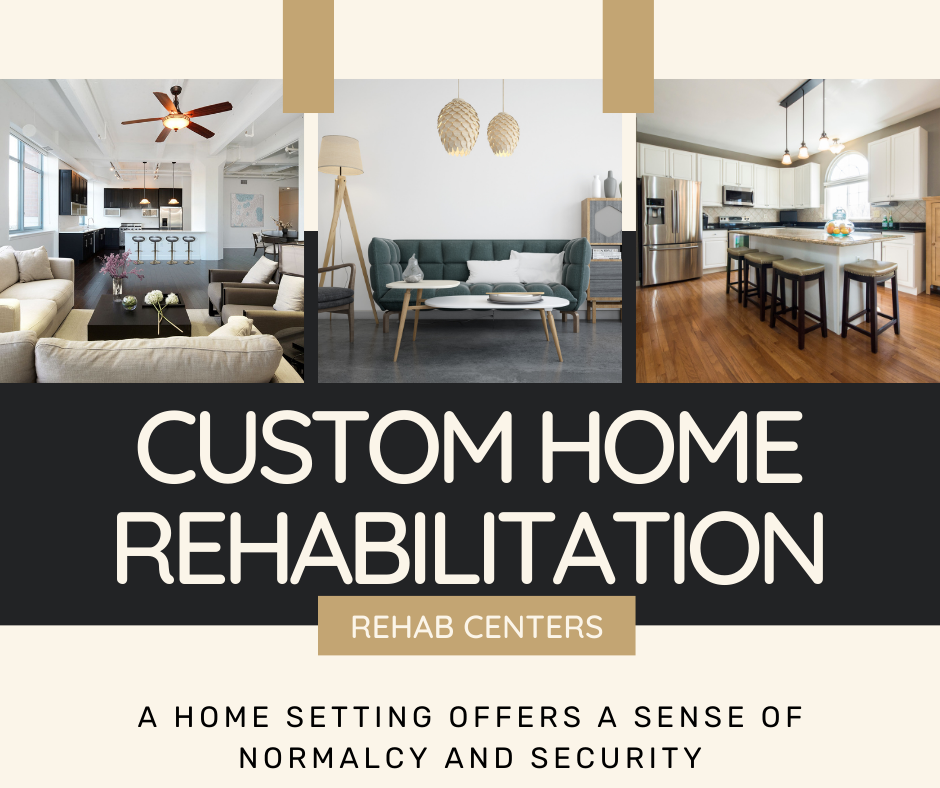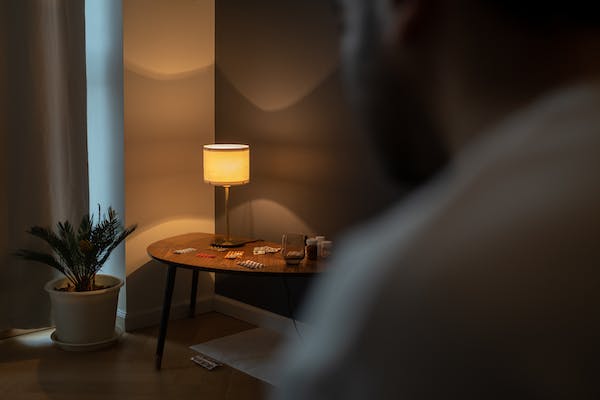
Rehabilitation is a critical step in the journey towards recovery, whether from injury, surgery, or substance abuse. The environment in which this rehabilitation occurs plays a significant role in the effectiveness of the recovery process. Custom home settings, designed to meet the specific needs of individuals, are increasingly recognized for their potential to enhance rehabilitation outcomes. Here’s why these personalized environments are so beneficial.
1. Comfort and Familiarity
One of the most compelling advantages of custom home rehabilitation settings is the comfort and familiarity they provide. Traditional clinical environments can often feel sterile and impersonal, which may exacerbate feelings of anxiety and stress. In contrast, a home setting offers a sense of normalcy and security. Being in a familiar environment can reduce stress, allowing individuals to focus more on their recovery. The emotional comfort of home can significantly contribute to a positive mindset, which is crucial for effective rehabilitation.
2. Personalized Care Plans
Custom home settings allow for highly personalized care plans tailored to the unique needs and preferences of the individual. Unlike in traditional rehab centers where care must be standardized to some extent to cater to many patients, home-based rehab can be designed specifically around the patient’s daily routines and specific rehabilitation goals. This individualized approach ensures that the patient receives the most effective therapies and interventions for their particular condition, enhancing the overall outcome.
3. Family Involvement and Support
Family support is a vital component of successful rehabilitation. Custom home settings facilitate greater involvement of family members in the recovery process. Family members can participate in therapy sessions, learn how to assist with exercises, and provide emotional support throughout the journey. This close involvement can boost the patient’s morale and motivation, creating a supportive network that reinforces the therapeutic interventions.
4. Reduced Risk of Infections
Hospitals and traditional rehab centers, despite stringent hygiene practices, can still be hotspots for infections. Home settings inherently reduce the risk of hospital-acquired infections, providing a safer environment for individuals, particularly those with compromised immune systems or those recovering from surgery. A clean, controlled home environment minimizes the exposure to pathogens, contributing to a healthier recovery process.
5. Flexibility and Convenience
Rehabilitation in a home setting offers unmatched flexibility and convenience. Patients can schedule therapy sessions at times that best suit their routines, reducing the need to travel and adhere to rigid institutional schedules. This flexibility can lead to better adherence to rehabilitation programs and increased engagement in therapeutic activities. Additionally, the convenience of being at home allows patients to incorporate daily living activities into their rehab, fostering a smoother transition back to normal life.
6. Holistic Approach to Recovery
Custom home settings enable a more holistic approach to rehabilitation, addressing not only the physical aspects of recovery but also emotional and psychological well-being. Home-based rehab can include components such as nutritional support, mental health counseling, and lifestyle modifications that contribute to overall wellness. This comprehensive approach ensures that all facets of the individual’s health are considered, leading to more sustainable recovery outcomes.
Custom home rehabilitation settings offer a unique blend of comfort, personalization, and holistic care that can significantly enhance rehabilitation outcomes. By providing a familiar environment, reducing infection risks, involving family support, and allowing for flexible, individualized care plans, home-based rehab addresses the specific needs of each patient. This tailored approach not only promotes more effective recovery but also fosters a positive, supportive atmosphere conducive to long-term well-being. As the healthcare landscape continues to evolve, the benefits of custom home settings in rehabilitation are becoming increasingly clear, offering a promising alternative to traditional rehab centers.
 Recovery from addiction is a transformative journey that requires a supportive and nurturing environment. One crucial aspect of this journey is creating a space where individuals feel safe, comfortable, and at home as they navigate the challenges of recovery. Making your recovery space feel like home involves thoughtful consideration of various elements that contribute to a sense of peace, security, and well-being.
Recovery from addiction is a transformative journey that requires a supportive and nurturing environment. One crucial aspect of this journey is creating a space where individuals feel safe, comfortable, and at home as they navigate the challenges of recovery. Making your recovery space feel like home involves thoughtful consideration of various elements that contribute to a sense of peace, security, and well-being. Embarking on the journey to recovery from addiction is a transformative process that involves physical, emotional, and spiritual healing. Creating an environment that feels like home can play a significant role in supporting individuals as they navigate the challenges of recovery. In this article, we explore how personalized spaces aid the healing journey, contributing to a sense of comfort, security, and empowerment.
Embarking on the journey to recovery from addiction is a transformative process that involves physical, emotional, and spiritual healing. Creating an environment that feels like home can play a significant role in supporting individuals as they navigate the challenges of recovery. In this article, we explore how personalized spaces aid the healing journey, contributing to a sense of comfort, security, and empowerment.
 1. Find a Place to Sit and Relax – One of the best and most simple solutions you can try is finding a place to go and sit in peace. Whether it’s at a park bench, an outdoor patio, or a quiet area in your home, this small step can be incredibly empowering. Taking some time away from the source of stress can often reduce anxiety and allow you to regain your composure.
1. Find a Place to Sit and Relax – One of the best and most simple solutions you can try is finding a place to go and sit in peace. Whether it’s at a park bench, an outdoor patio, or a quiet area in your home, this small step can be incredibly empowering. Taking some time away from the source of stress can often reduce anxiety and allow you to regain your composure.

 When considering drug treatment facilities, it’s important to think about both the short-term and long-term results that you could achieve. In the short-term, a drug treatment facility can provide an individual with a safe and secure environment in which to detox from drugs, while also providing structure and guidance in order to begin the process of developing strategies and techniques to maintain sobriety. In the long-term, a drug treatment facility can not only provide support and guidance for lasting recovery, but it can also provide a network of resources that can help to ensure that someone is able to transition back into their life outside of treatment.
When considering drug treatment facilities, it’s important to think about both the short-term and long-term results that you could achieve. In the short-term, a drug treatment facility can provide an individual with a safe and secure environment in which to detox from drugs, while also providing structure and guidance in order to begin the process of developing strategies and techniques to maintain sobriety. In the long-term, a drug treatment facility can not only provide support and guidance for lasting recovery, but it can also provide a network of resources that can help to ensure that someone is able to transition back into their life outside of treatment.